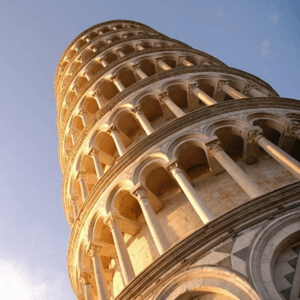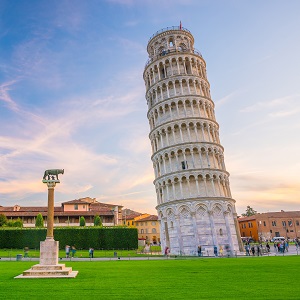The Camposanto Monumentale, also known as the Campo Santo, translates to the monumental cemetery or old cemetery.
It is nestled on the edge of the Piazza dei Miracoli in Pisa, being the holy field of the region.
The History of Camposanto Monumentale
It is said to have been built around a shipload of sacred soil, brought back to Pisa from Golgotha in the Fourth Crusade by Ubaldo de’ Lanfranchi, who was the archbishop within the 12th century. The legend surrounding the soil says that those buried within the land will rot in just 24 hours. legend claims that bodies buried in that ground will rot in just 24 hours. This cemetery lies over the ruins of Santa Reparata, once the old baptistery of Pisa. The construction of this ancient structure began in 1278, by architect Giocanni di Simone, who later passed away in 1284 when Pisa was defeated in battle against the Genoans. Due to this, the cemetery was completed well after its start date, officially becoming complete in 1464.
The Design of the Building
The structure is an stunning display of beauty, with the outer and inner decorations making this attraction well worth the visit. The outer walls are built with 43 blind arches, with two doorways, each ornamented in a different style. The doorway to the right of the building is styled with a spectacular Gothic tabernacle, containing the Virgin Mary and four saints. This doorway was done by Giocanni Pisano in the late 14th century and was the original entrance to the structure.
The Chapels
The Camposanto Monumentale cemetery has three chapels within it. The oldest chapel was built in 1360 and is known as Ammannati, named after its tomb of Ligo Ammannati, who was once a teacher in the University of Pisa. The second is the chapel of Aulla, which was made by Giovanni della Robbia in 1518. The newest chapel was created in 1594, named Dal Pozzo, and was dedicated to St. Jerome.
The Sarcophagi
Within the Camposanto Monumentale contains an astonishing range of Roman sarcophagi. Nowadays, there are only 84 left to see, but before the war and reconstruction, there were hundreds more on display. Many of this more fragile sarcophagis once found within this attraction is now within the museum, to avoid any further destruction.
The Frescoes
Back in ancient times, the entire walls of the structure were covered by a stunning collection of frescoes. Many were created as early back as 1360, with the newest created around three centuries later. Noteworthy pieces included the Crucifixion by Francesco Traini, located in the southwestern side of the building. As well the Last Judgement, The Hell, The Triumph of Death all located on the opposite north side. Simply strolling through the building along the sides of the walls is worth the visit in itself, as the cycle of frescoes tells a stunning tale of the past and religious views that define this building.
Explore Our Pisa Tours!
-
Half Day Pisa Tour from Florence
5.5 Hours
€55
See More -
1 Hour Guided Pisa Tour
1 Hour
€15
See More -
Two Hour Pisa Walking Tour
2 Hours
€38
See More




